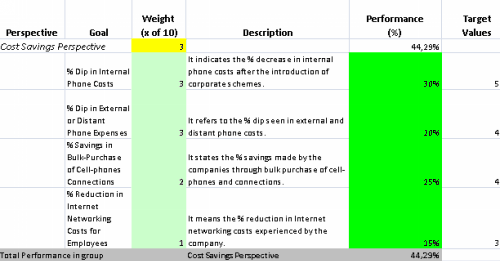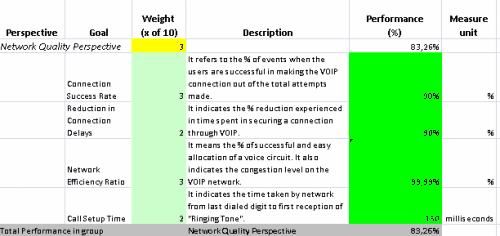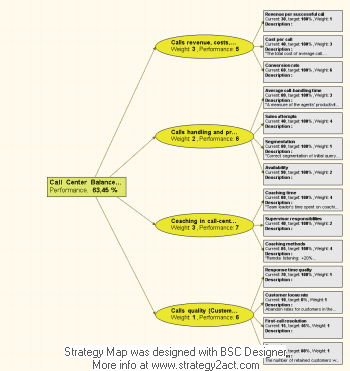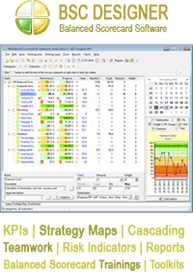KPI Name: Cell Phone Balanced Scorecard Metrics
Related KPIs: Customer Relationship, Call-Center, Help Desk, Interactive Voice Response, Customer Profitability, Customer Profiling, Customer Value, Customer Conversion, Customer Loyalty, Internet Access, VOIP
Customers also viewed: Personal Productivity
Sample reports:
Some reports were generated with Balanced Scorecard Designer for the Cell Phone Balanced Scorecard Metrics KPI to show both – Balanced Scorecard Designer functionality and a part of KPI content:
- Check Overview KPI Report sample.
- Check Full HTML Scorecard Report sample.
- Check Diamond Style Report sample.
Balanced Scorecard Designer Screenshot:

The Balanced Scorecard Designer software was used to create this KPI.
Description by authors:
There are number of reasons which force companies to provide corporate cell phones or network connections to their employees, which include better tracking, improved coordination, cost savings, etc. With KPIs these companies are able to judge the efficacy of the cell phone schemes used by them with ease. Cell Phone KPIs for user companies are basically configured under four parameters- cost savings, customization, operation and control, and lastly employee tracking.
Cost Savings Perspective shows the level of savings made by the companies with the use of corporate mobile networks. It consists of KPIs like % dip in internal phone costs, % dip in external or distant phone expenses, % savings in bulk purchase of cell-phones connections and % reduction in internet networking costs for employees.
Customization Perspective takes into consideration KPIs like customization level of corporate mobile network schemes, % rise in discounts on corporate employee mobile schemes, number of value added features enjoyed and rise in cheaper tariff plans.
Operation and Control Perspective talks about KPIs such as improvement in Connectivity Level on same mobile network, staff optimization level, control level over mobile usage and spending policies and security level adequacy.
Employee Tracking Perspective shows the effectiveness of mobile networks in enhancing employee tracking. It comprises of KPIs like improvement in employee tracking, rise in employee efficiency, employee coordination level and rise in employee safety.
KPI in Excel – Screenshot:








